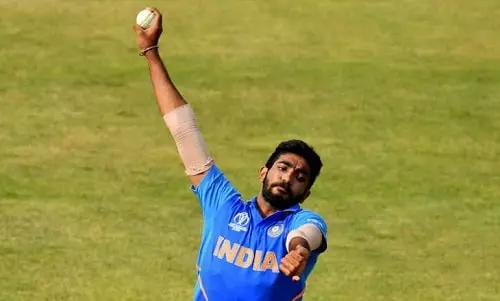If you play cricket you may have noticed that there’s something almost magical about the game of cricket. In numerous corners of the globe, it’s not just a sport, it’s a tradition, an obsession, and for some, a way of life. The game’s rich blend of physical strength, strategic thinking, and mental agility has spellbound countless spectators and players around the world. Yet, as captivating as cricket can be, it comes with a complex mixture of aspects that deserve a closer look.
Today, we aim to venture deep into the nuanced universe of cricket, weighing both the benefits and the challenges that come with participating in this globally admired sport. Whether you’re a pro cricketer, an enthusiastic fan, or just a casual onlooker with immense interest, our today’s post promises to shed new light on cricket’s unique appeal and the occasional hurdles that it presents. Here we go.

Advantages of Playing Cricket
Let’s get started with the advantages first because there is a lot to talk about this incredible sport.
1. Physical Benefits
Cricket isn’t just a sport where you swing a bat and chase a ball; it’s a full-body workout requiring agility, power, and perseverance. Regularly engaging in the game will not only boost your cardiovascular health but will also fine-tune your hand-eye coordination. The constant running, throwing, and hitting involved in the game will inevitably build your physical stamina, contributing to an overall healthier and more active lifestyle. Plus, with all these physical activities involved, cricket becomes an effective way to manage weight and promote a healthier physique. So yeah, if you want to get fit, and that is one of your life goals, then cricket would be the game you should play regularly.
2. Psychological Benefits
Cricket is more than a physical game; it’s also a mental exercise. The game’s strategic nature necessitates quick thinking and effective decision-making under pressure, improving cognitive flexibility. Every match unfolds differently, each bringing a unique set of circumstances requiring players to adapt accordingly. It’s this mental engagement that makes cricket an excellent stress reliever. Playing cricket allows you to immerse in the moment, steering your mind away from the daily grind, and providing an entertaining and engaging way to maintain mental health. Many cricket players have said that cricket is like meditation for them, sure it is a physically demanding game, but in the end it just makes them feel happy inside.
3. Social Benefits
Cricket’s impact is not confined within the boundaries of the pitch; its social implications ripple outwards into everyday life. One of the key principles the sport fosters is the spirit of camaraderie and teamwork, as cricket is rarely a one-person show. These skills learned on the cricket field, are invaluable in various other aspects of life. Additionally, cricket’s global popularity means playing the sport can expose you to diverse cultures and perspectives, broadening your understanding and appreciation of the world around you.
4. Economic Opportunities
For many individuals worldwide, cricket isn’t just a hobby or a leisure activity; it’s a gateway to a promising professional path. The sport offers lucrative career opportunities, with professional cricketers often earning substantial incomes on both national and international platforms. But it’s not only the elite players who can economically benefit from the sport. Even at the grassroots level, cricket can drive local economies, create jobs, and provide promising young talents with scholarships and opportunities for growth and development. Cricket can indeed be a game-changer in economic terms, and it’s worth giving a shot.
Disadvantages of Playing Cricket
While cricket offers its players an array of physical, psychological, and social benefits, it isn’t all sunshine and sixes. Let’s swing the spotlight to the more obscure corners and unpack some of the downsides that come with playing this sport.
1. Physical Risks
Cricket may seem like a slower-paced sport compared to something like football or basketball, but don’t be fooled. It has its fair share of physical risks. It’s not uncommon for players to suffer from muscle strains and sprains, or even more severe injuries like fractures from awkward landings or mishandling equipment. Even beyond these immediate injuries, playing cricket comes with the potential hazard of long-term physical damage, often due to overuse injuries. Bowlers, for instance, are known for repetitive stress injuries to their bowling arms, which can sometimes lead to chronic issues that last far beyond their playing days.
2. Psychological Risks
Swinging the pendulum from physical to psychological, it’s crucial to note that cricket can be a mental minefield. Players are constantly under the microscope to perform and win matches, which can build up an incredible amount of stress and pressure. It’s like a constant internal battle with your own performance expectations. For younger players, who are still trying to balance academics and cricket, the pressure can sometimes get out of control. The task of keeping up with school assignments and exams while aiming to hit their best cricketing performance can lead to mental exhaustion and, in severe cases, burnout.
3. Economic and Social Considerations
Lastly, playing cricket, particularly at a competitive level, can knock your finances for a six. The costs can start to mount up, from investing in professional-grade cricket gear to paying for specialized coaching and travel expenses for tournaments and matches. Additionally, the path to progression in cricket can be rocky, especially in countries where the sport isn’t a major pastime. This factor can limit opportunities, making the hefty investment feel less worthwhile.
Conclusion
Among all the other sports, cricket is definitely the favorite of millions around the globe. And by considering these pros and cons of the sport, one can enjoy playing this amazing sport without getting any adverse effects in their life.

Passionate sports content writer, Rocky delves into the world of athletics with a keen eye for detail. With a background in journalism, he transforms moments on the field into compelling narratives that resonate with readers.









